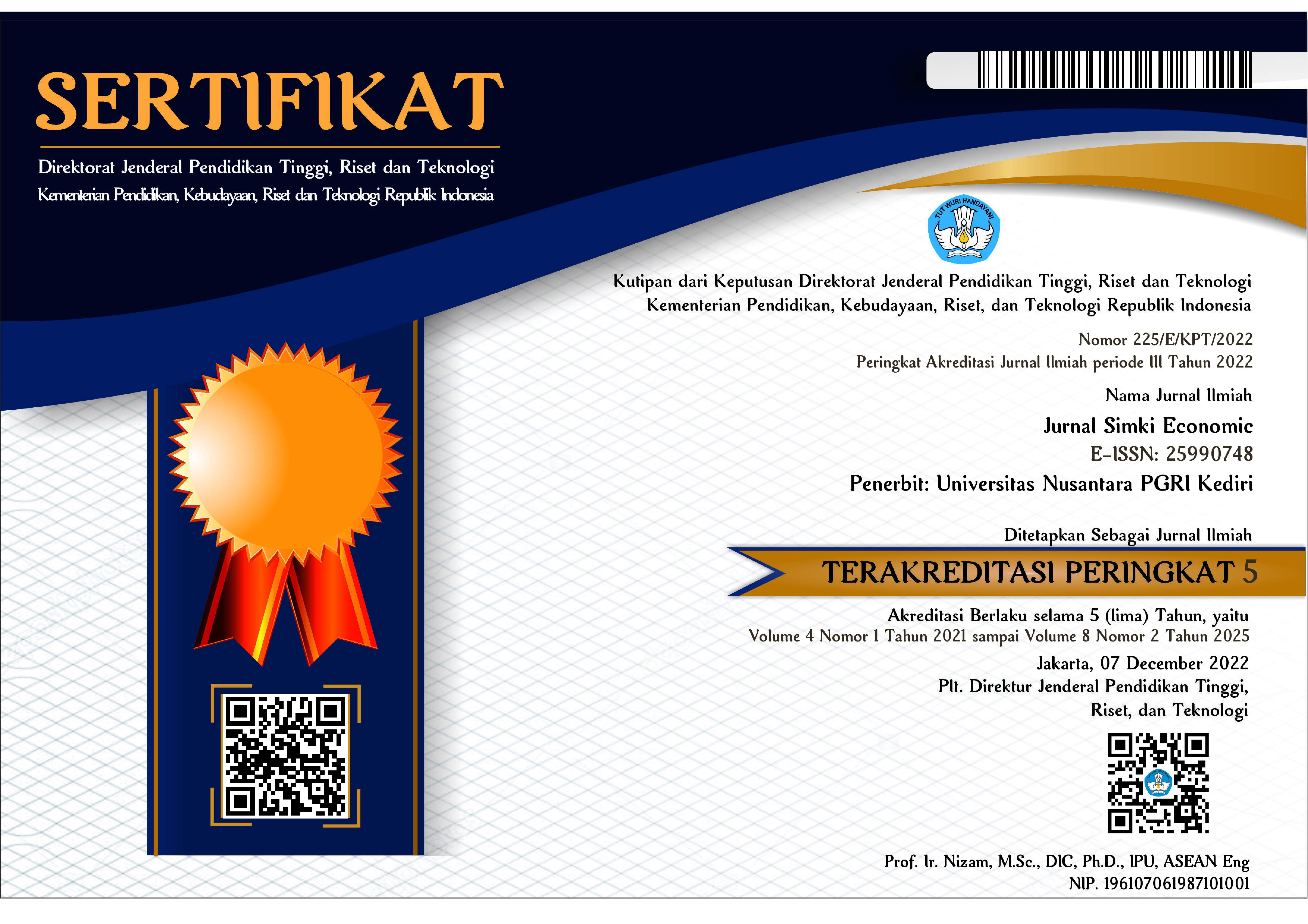Optimizing Management Practices for Boosting Creativity and Innovation in Multinational Corporations: Evidence from PZ Cussons Nigeria Plc.
 Abstract views: 244
,
Abstract views: 244
,
 PDF downloads: 117
PDF downloads: 117
Abstract
The research focused on optimizing management practices for boosting creativity and innovation in multinational corporations. Rapid technology advancement, shorter product life cycles, dynamic services, and globalisation are becoming increasingly prevalent features of the business environment. The specific objectives were to investigate the role of access to technology on idea conversion rate, analyse digital infrastructure on idea conversion rate and examine the skills development initiatives on the idea conversion rate. Resource-based view theory was adopted for this study. A descriptive survey research design was utilised for the study, and a self-structured questionnaire was used to gather information. The study population was 946 PZ Cussons Nigeria Plc employees and a sample size of 211 was determined using the Raosoft (2004) formula. Multiple linear regression was used to test the hypothesis, and socio-demographic data were analysed using a frequency table and percentage. The result showed a positive correlation of 0.487. The result indicates that access technology has a negative coefficient of -.156 on idea conversion rates, while digital infrastructure and skill development initiatives have positive coefficients of .451 and .574 on idea conversion rates. It was therefore recommended that establishing management rules that are adaptable and sensitive to the ever-changing business landscape is advised for businesses.
Downloads
References
Adenuga, T. (2022). Exploring Adjustment Challenges of Nigerian International Students in US Higher Education (Doctoral dissertation, Morgan State University). https://www.ojed.org/cies/article/view/5321
Agustian, K., Mubarok, E. S., Zen, A., Wiwin, W., & Malik, A. J. (2023). The Impact of Digital Transformation on Business Models and Competitive Advantage. Technology and Society Perspectives (TACIT), 1(2), 79-93. http://dx.doi.org/10.61100/tacit.v1i2.55
Anning-Dorson, T., & Nyamekye, M. B. (2020). Be flexible: turning innovativeness into competitive advantage in hospitality firms. International Journal of Contemporary Hospitality Management, 32(2), https://doi.org/10.1108/IJCHM-12-2018-1014
Bashir, N. (2023). Digital Platforms for Open Innovation: An Outlook from Technology Firms. In ISPIM Conference Proceedings (pp. 1-26). The International Society for Professional Innovation Management (ISPIM). https://www.proquest.com/conference-papers-proceedings/digital-platforms-open-innovation-outlook/docview/2840811073/se-2
Bittencourt, M. S., Benjamin, E. J., Muntner, P., Alonso, A., Callaway, C. W., Carson, A. P., ... & American Heart Association Council on Epidemiology and Prevention Statistics Committee and Stroke Statistics Subcommittee. (2019). Heart disease and stroke statistics—2019 update: a report from the American Heart Association. Circulation, 139(10), e56-e528.
Bughin, J. (2018). Skill Shift: Automation and The Future of the Workforce. Mckinsey Global Institute.
Errida, A., & Lotfi, B. (2021). The determinants of organizational change management success: Literature review and case study. International Journal of Engineering Business Management, 13, https://doi.org/10.1177/18479790211016273
Faggio, G., & Silva, O. (2014). Self-employment and entrepreneurship in urban and rural labour markets. Journal of Urban Economics, 84, 67-85. https://doi.org/10.1016/j.jue.2014.09.001
Farida, I., & Setiawan, D. (2022). Business strategies and competitive advantage: the role of performance and innovation. Journal of Open Innovation: Technology, Market, and Complexity, 8(3), 163. http://dx.doi.org/10.3390/joitmc8030163
Hjort, J., & Poulsen, J. (2019). The Modelling of fast internet and employment in Africa. American Economic Review, 109(3), 1032-1079. http://dx.doi.org/10.1257/aer.20161385
Hustad, E., & Olsen, D. H. (2021). Creating a sustainable digital infrastructure: The role of service-oriented architecture. Procedia Computer Science, 181, 597-604. https://doi.org/10.1016/j.procs.2021.01.210
Jang, E., Gu, S., (2016). Categorical reparameterization with gumbel-softmax. arXiv preprint arXiv:1611.01144. https://doi.org/10.48550/arXiv.1611.01144
Miller, T. (2019). Explanation in artificial intelligence: Insights from the social sciences. Artificial intelligence, 267, 1-38. https://doi.org/10.1016/j.artint.2018.07.007
Obialo, F. (2020). Fostering creativity and innovation for business success among Nigerian university students: General principles. European Journal of Education Studies, 7(10), 489-506. http://dx.doi.org/10.46827/ejes.v7i10.3323
Odetunde, O. J., & Ufodiama, M. N. (2020). Transformational leadership and organisational culture as predictors of employee creativity and innovation in the Nigerian oil and gas service industry. Ife PsychologIA, 25(2), 325 – 349. https://www.ajol.info/index.php/ifep/article/view/162279
Olawale, F., & Garwe, D. (2020). Innovation strategies in multinational corporations: A comparative analysis. Journal of International Business Studies, 30(1), 55-72.
Pandey, N., de Coninck, H., & Sagar, A. D. (2022). Beyond technology transfer: Innovation cooperation to advance sustainable development in developing countries. Wiley Interdisciplinary Reviews: Energy and Environment, 11(2), e422. https://doi.org/10.1002/wene.422
Patrisia, D., Linda, M. R., & Abror, A. (2022). Creation of competitive advantage in improving the business performance of banking companies. Jurnal Siasat Bisnis, 121-137. https://doi.org/10.20885/jsb.vol26.iss2.art1
Rampa, R., & Agogué, M. (2021). Developing radical innovation capabilities: Exploring the effects of training employees for creativity and innovation. Creativity and Innovation Management, 30(1), 211-227. https://doi.org/10.1111/caim.12423
Russo, M. V., & Fouts, P. A. (1997). A resource-based perspective on corporate environmental performance and profitability. Academy of management Journal, 40(3), 534-559. https://doi.org/10.2307/257052
Sobakinova, D., Zhou, Y., & Durrani, D. K. (2020). The role of human capital outcomes in generating business ideas. VINE Journal of Information and Knowledge Management Systems, 50(1), 163-183. http://dx.doi.org/10.1108/VJIKMS-03-2019-0033
Taiwo, L. A. (2022). Organisational Characteristics, Performance Measurement and Effectiveness of Small and Medium Enterprises in Lagos State, Nigeria (Doctoral dissertation, Kwara State University (Nigeria).
Tian, X., & Lu, H. (2023). Digital infrastructure and cross-regional collaborative innovation in enterprises. Finance Research Letters, 58, 104635. https://doi.org/10.1016/j.frl.2023.104635
Valerio, A., Parton, B., & Robb, A. (2014). Entrepreneurship education and training programs around the world: dimensions for success. https://doi.org/10.1596/978-1-4648-0202-7
Wolcott, R. C., & Krippendorff, K. (2024). Proximity: How coming breakthroughs in just-in-time transform business, society, and daily life. Columbia University Press. https://www.jstor.org/stable/10.7312/wolc20758
Copyright (c) 2025 Zekeri Abu, Kayode Muhammed Ibrahim

This work is licensed under a Creative Commons Attribution 4.0 International License.














